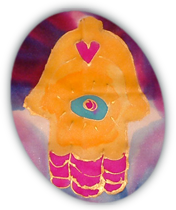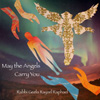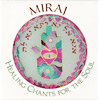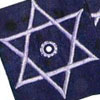Creative Life Cycle Rituals & Services
In the last 40 years since women entered the rabbinate, there are many new creative options to mark formerly private or unacknowledged moments. Rabbi Rayzel has produced powerful healing rituals for menopause, infertility, abortion, surviving breast cancer and many more. She has also fashioned joyous rituals for occasions such as birthdays, adoption ceremonies and anniversaries. Let her guide you to shape the ritual that is called for your occasion.

Rabbi Rayzel and Rabbi Shawn Zevit do a healing service in the time of Coronavirus to give us hope and raise our spirits!

Below, read Kassi Underwood's story that helped her heal in "That Time I Did a Jewish Abortion Ritual."

Download Rabbi Rayzel's deep, healing abortion ritual. Let rituals from ancient times help you.

Read about the creative ritual for breast reduction in LILITH magazine
For more information, email me at

or call 215-237-2955
That Time I Did a Jewish Abortion Ritual
by Kassi Underwood
In the parking lot of a train station outside Philadelphia, I climbed into the passenger’s seat of a cluttered minivan and shook Rabbi Rayzel Raphael’s little hand. At five foot one and tiny, she peered over the steering wheel, through the hot pink frames of her glasses. She wore scarlet red lipstick, had a smoky Southern drawl. She said she was trying to imagine how I must feel, having schlepped down from New York City to talk about my abortion with a Jew I’d never laid eyes on.
It was love at first sight on my end. I never expected to have my own rabbi — I’d been raised on pepperoni pizza in the Episcopal Social Club of Kentucky — but Rabbi Rayzel had created the first Jewish ritual for abortion, so I thought she could help me. As a woo-woo freak who dog-eared The Secret, I believe that if you do not like your story, you can write a new ending.
At first, not having a baby was great — I’d gotten sober, graduated from college, and started an editorial job without wiping a single bum besides my own. I was out spreading the good news of first-trimester pregnancy termination when my story gave way to an unfortunate sequel. My ex had a child and named her Jade, the same name I had thought of naming our baby. An army of children invaded my dreams, and I felt weighed down, as if a second body were draped over my shoulders. Also, I felt embarrassed. This was about a five-minute medical procedure six years ago. Why all these feelings?
At twenty-five, I stumbled out on a pilgrimage in search of a new ending to my story. When I called Rabbi Rayzel for the first time, she refused to meet me until I was ready. “You’ve got a little work to do,” she sang. Apparently, she meant three years’ worth. Over e-mail, she assigned a series of spiritual exercises for me to do at home. Meanwhile, I zigzagged across the country, kvetching to a bunch of other experts.
A Buddhist priest on the Upper West Side banged a gong and chanted to my “waterbaby,” looking expectantly at me, while I sat alone in a pew and mouthed some words. At a Catholic retreat, I lugged around an eight-pound Crag of Ill Repute to represent the stoning scene of New Testament fame. In California, a mystical healer had me wide-eyed on a motel bed, doing Lamaze-style breathing reps. I was totally into most of it, but I ultimately found that I had compounded the inner conflict I wanted to transcend.
In my downtime, I was following my rabbi’s instructions, which is to say I spent many nights cross-legged on pillows in the white strobe of a tea candle. With a notebook in my lap and a pen in my non-dominant hand, I asked the air important questions. Hello, air. What do I need to move on? The air dictated what looked like ransom notes from a kindergartener. Over time, the notes started to mean something to me, and after exchanging nearly 200 e-mails, my rabbi deemed me ready: ready to write my own ritual, that is. So we designed one via e-mail, and then I headed to Philly.
I sat down at her kitchen table with a group of rabbis and Hebrew priestesses, her “wild women.” There was vegan brisket, kosher coleslaw, and Ellie, a priestess who carves her own wooden flutes. Ellie’s voice struck a firm and searching tone. She told me one of the oldest stories known to the world: the Sumerian myth of Inanna, goddess of love, fertility, and war, who chose to descend to the underworld to embrace her “shadow self.” Ellie said this ritual would help me fully integrate my shadow, the part of me I had rejected, and that would help me heal. I licked brisket sauce from my fingers, secretly doubting I had a shadow — I would never reject myself. I was too evolved.
After dinner, we moved into the darkened living room. My rabbi crooned a ditty she had written about The Red Tent. I padded across the plush red carpet to a circle of red couches and chairs. The candlelit room smelled of the cedar incense that floated above the altar, otherwise known as the coffee table. Earlier in the evening, I had browsed my rabbi’s impressive collection of goblets and chosen two for the ritual. One of them, a glass goblet filled with lemonade, bore this inscription: “Blessed are you who brings us from the narrows into the wilderness and sustains us with endless possibilities and enables us to reach a new place.” There was a platter of food, and under the figs I could make out a big-bellied form with enormous hooters. A yellow dog named Spirit curled up at my feet.
My rabbi eased into a stool that reminded me of a tree stump. She began chanting. “We invite the ancestors into the room, the ones who have spoken to us through the generations. We invite the matriarchs of the Bible. We invite the energies from the north, the east, the south, the west. We invite them to be here with us to create sacred space as we weave our lives together.”
Once all those folks arrived, everyone sang, “Ahh-meh-heh-heh-hen.” “Now,” said my rabbi. She blinked up at me, her glasses having slid halfway down her nose. “In the mythic metaphor, we have Eve and Lilith. Eve, the domestic goddess. Lilith, the wild woman. We have those archetypes within us. The good girl, the bad girl. We’re a combination of the two, but when we oppose the good girl and the bad girl inside of us, well, that’s when we start thinking in black and white. Kassi, you’ve spent the past three years writing about your past. Let’s hear it.”
I gripped the paper with both hands and scanned the smiling circle. “I was a nineteen-year-old sophomore in college.” “Good girl,” my rabbi blurted out. “I drank too much.” “Bad girl.” I didn’t know this would be a call and response situation. “I called myself a feminist.” “Good girl.” “But I hadn’t finished reading the feminist canon.” “Bad. Girl!” “I would never, ever get pregnant without meaning to.” “Good gurrrl.” “But I did.” “Bad girl.” “I was a Southern Belle, rabbi. I could never, ever have an abortion.” “Good girl.” “But I did.” “Bad girl. See? Bad Girl gets pregnant and has an abortion.”
The wild women oohed and ahhed, and Spirit snarled at something, maybe me. I shifted my weight in the red seat, saying hmm, and saw for the first time how I was responsible for my inner-conflict. I had divided myself into rivals. Before, I occasionally referred to myself as “bad,” but I was always flattering myself. Bad like Cleopatra. Like Joan Rivers. Like RuPaul. My rabbi was wise enough to recognize that I was judging myself as just plain bad. Whenever I failed to live up to my Good moral code, I privately berated myself. Let me tell you something: I had to stop if I wanted to move on.
This big search for a new ending to my story turned out to be a search for a new beginning — for oneness with my younger self. That required me to look back, look hard, find the glory in the grit.
I’ll be damned if I wasn’t half-decent back then. For one, I had guts. With nothing to guide me but my intuition, I had ended my pregnancy and released the outcome to the universe. What a colossal act of faith. No wonder it brought on the rapture. I wasn’t perfect, but why would I want to be? All the good stuff lives in the gap between my ideals and my real life: humility and vulnerability, self-examination and new directions. I have made that gap my home.
Ellie lifted a wooden flute to her lips, while my rabbi intoned a blessing over the goblet of lemonade. “Let us bless the source of life who gives us all kinds of adventures to taste and experience, and appreciate the complexities of life, and the dichotomies that go together.” She handed me the goblet, and I swigged a bittersweet sip. She passed around the big belly platter, from which we mixed wasabi with chocolate, onions with figs, chickpeas with beets. As Spirit barked and growled, I sat there eating and petting her furry head.
Kassi Underwood is a Pro-Voice Fellow and is working on a memoir about her pilgrimage after abortion.This article originally appeared August 15, 2013 at exhaleprovoice.org/blog-post/time-i-did-jewish-abortion-ritual
Read more at her web site.







